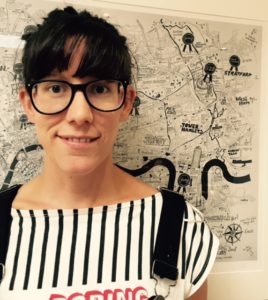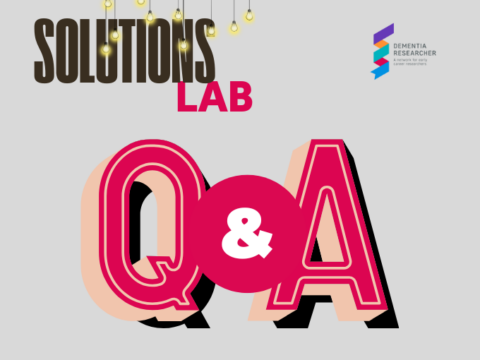Conversation Analysis (CA) is an approach that examines how mutual understanding is achieved (or not) in naturally occurring conversations. The godfathers of CA, Sacks, Schegloff and Jefferson often analysed audio recordings of telephone conversations. They transcribed the conversations and examined how turns are constructed. They observed naturally occurring breakdowns and methods of repair that are used to resolve these. Despite conversation appearing messy, it turns out that it is extremely systematic, and these systems often traverse language barriers. In fact, no matter whether speaking in Chinese or in German overlapping speech (often described as an interruption) is generally avoided with less familiar speakers, and accepted more with familiar speakers.
So how can CA help in dementia? It is often in the context of conversation that the first signs of dementia may be observed. It may be the topic itself (perhaps inappropriate, tangential or difficulties in the completion of the topic for example), incomplete question and answer sequences, an extended word searching behaviour, or difficulties resolving the breakdown that has occurred. This underlines conversation as a diagnostic resource. A non-invasive and plentiful pool that can provide a large data set, with little effort. Indeed, it is not uncommon that a health professional will have a sneaking suspicion about an underlying diagnosis after just a few moments of chatter.
 It is not uncommon that people with dementia will say they manage well in conversations with certain people (eg friends, partners or family members) and less well with others (certain other friends or family members or strangers). In fact, we all probably experience this a little. We may have walked away from conversations and felt that it went particularly well, or another conversation may have gone terribly, and we are unsure what exactly happened. CA is a great way to understand exactly what happened. To identify how people collaborated to complete a turn or solve a breakdown (facilitators). That said it can also highlight where people make things harder, such as asking certain types of questions that make it really difficult for the person with dementia to answer, or extending turns artificially and unnecessary (barriers). These can really impede the flow of conversation.
It is not uncommon that people with dementia will say they manage well in conversations with certain people (eg friends, partners or family members) and less well with others (certain other friends or family members or strangers). In fact, we all probably experience this a little. We may have walked away from conversations and felt that it went particularly well, or another conversation may have gone terribly, and we are unsure what exactly happened. CA is a great way to understand exactly what happened. To identify how people collaborated to complete a turn or solve a breakdown (facilitators). That said it can also highlight where people make things harder, such as asking certain types of questions that make it really difficult for the person with dementia to answer, or extending turns artificially and unnecessary (barriers). These can really impede the flow of conversation.
This last paragraph highlights the applied value of CA research. By this I mean how this type of analysis can inform care. CA has informed a number of staff training and education programmes. One recent example of this revealed that when staff use ambiguous language to attempt to finish an interaction then people with dementia are often unable to follow these prompts. Secondly, CA can inform interventions for people with dementia and their families and friends working on conversations. The literature here often reveals that family members are more likely to use artificial test or teaching type questions in routine conversation, which often cause frustration for both. This may be done subconsciously, and with the best of intentions. Yet once explored and discussed are often better avoided to relieve frustration and enhance relationships.
In summary, if you have not previously heard of or tried CA please give it a chance! I am a big fan and I feel this could be the top of the iceberg, and that CA could offer so much more for dementia. Imagine improving someone’s relationship and quality of life to the point where it made care easier!
Author
Dr Anna Volkmer is a Speech and Language Therapist and researcher in Language and Cognition, Department of Psychology and Language Sciences, University College London. Anna is researching Speech and language therapy interventions in language led dementia and was once voted scariest speech and language therapist (even her children agree).
Do you use conversational analysis in your work? Let us know your thoughts and leave a reply below.

 Print This Post
Print This Post





